Mil Helicpter plant
Mil Mi-6 -V-6 'Hook'
 |
|
| General information | |
|---|---|
| Type | Heavy transport helicopter |
| Manufacturer | Mil Moscow Helicopter Plant |
| Status | Retired from service |
| Primary users | Soviet Air Force (historical)Aeroflot (historical) |
| Number built | 926 |
| History | |
| Manufactured | 1959–1980 |
| First flight | 5 June 1957 |
| Retired | 2002 (Russia CAA) |
| Variants | Mil Mi-10 |
|
|
|
|
|---|
.
History Mil Moscow Helicpter plant
Mil Mi-6 type V-6 izdeliye 50
NATO reporting name:
'Hook'
-
Design
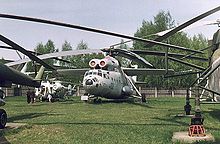
A Mil Mi-6. The Mil Mi-6 (NATO reporting name Hook), given the article number izdeliye 50 and company designation V-6, is a Soviet/Russian heavy transport helicopter that was designed by the Mil design bureau. It was built in large numbers for both military and civil use and was the largest helicopter in production until the Mil Mi-26 was put in production in 1980
Variants

An Mi-6 at Riga, Latvia Data from: Mil's heavylift helicopters : Mi-6, Mi-10, V-12 and Mi-26
- izdeliye 50
- The product or article number for the V-6 prototype.
- V-6
- (Zavod No.329 Moscow) First prototype series.
- Mi-6
- (NATO – Hook-A) Heavy-lift civil and military transport helicopter.
- Mi-6A
- Troopships and commercial transport helicopters built to a new baseline standard with improvements in reliability and new avionics.
- Mi-6AYa
- (NATO – Hook-D) OKB designation for the Mi-6VzPU and Mi-22 airborne command posts, with SLAR.
0
KmCeiling
0
KmMAX RANGE
0
Km.hAircraft Speed
0
Max Crew
Photo Gallery
Mil Helicpter plant
Mil Mi-6 type V-6 izdeliye 50
NATO reporting name:
'Hook'


Mil Helicpter plant
Mil Mi-6 type V-6 izdeliye 50
NATO reporting name:
'Hook'
General characteristics
- Crew: 6 (pilot, copilot, navigator, flight engineer, radio operator, technician)
- Capacity: 90 passengers / 70 airborne troops / 41 stretcher cases with 2 medical personnel
- Payload: 12,000 kg (26,455 lb) maximum internal cargo
-
-
-
- 9,016 kg (19,877 lb) at 44,000 kg (97,003 lb) TOW
- 7,516 kg (16,570 lb) at 42,500 kg (93,696 lb) TOW
- 5,516 kg (12,161 lb) at 40,500 kg (89,287 lb) TOW
-
-
- Maximum slung load: 8,000 kg
- Height: 9.156 m (30 ft 0 in)
-
Powerplant
- Powerplant: 2 × Soloviev D-25V turboshaft engines, 4,100 kW (5,500 shp) each equivalent for take-off
-
-
-
- 2,312 kW (3,100 shp) at 3,100 m (10,200 ft) and 250 km/h
-
-
- Main rotor diameter: × 35 m
Specifications
- Maximum speed: 300 km/h (190 mph, 160 kn)
- Cruise speed: 250 km/h
- Range: 970 km
- Ferry range: 1,450 km
- Endurance: 2 hours 51 minutes at 140–160 km/h (87–99 mph; 76–86 kn) at 1,000 m (3,300 ft) and 40,500 kg (89,287 lb) TOW
- Service ceiling: 4,500 m (14,800 ft) up to 42,500 kg (93,696 lb) TOW
-
-
-
- 3,000 m (9,800 ft) at more than 42,500 kg (93,696 lb) TOW
-
-
Armament
-
-
-
- The navigator's station can be equipped with a 12.7 mm (0.500 in) Afanasev A-12.7 machine-gun with up to 270 rounds
-
-
-
-
Links to Youtube & Others
The Mil Mi-6 Hook is a heavy transport helicopter developed in Russia in the course of the 1950s. It has established many firsts: it was the first Soviet (twin) turbine powered helicopter to enter in production and for several years the largest, both for its size and for its load capacity. The Mil Mi-6 Hook also set 16 world records. A tragic accident happened in 2002 marked the end of the career of this “flying heavy truck”. In April 1966 one of these aircraft was shortly tested in Switzerland.
Mil Helicpter plant
Mil Mi-6 type V-6 'Hook'
The development of the Mil Mi-6 began in the first half of the ‘50s to meet the needs of the Soviet armed forces.
Youtube Link
On October 30, 1957 it carried an internal load of 12,000 kg (26'470 lbs) to an altitude of 2'432 meters (7'980 ft)..

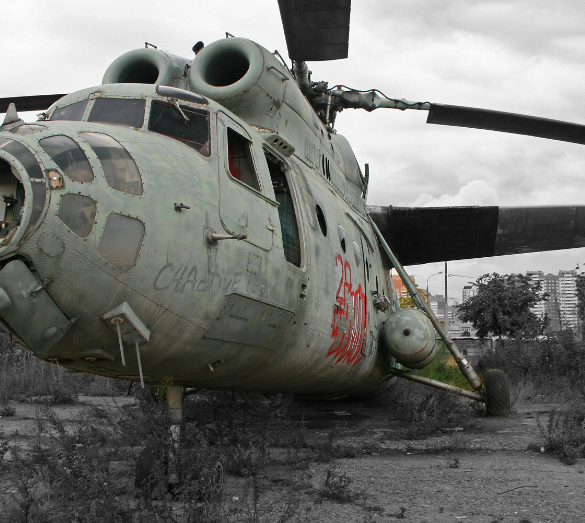

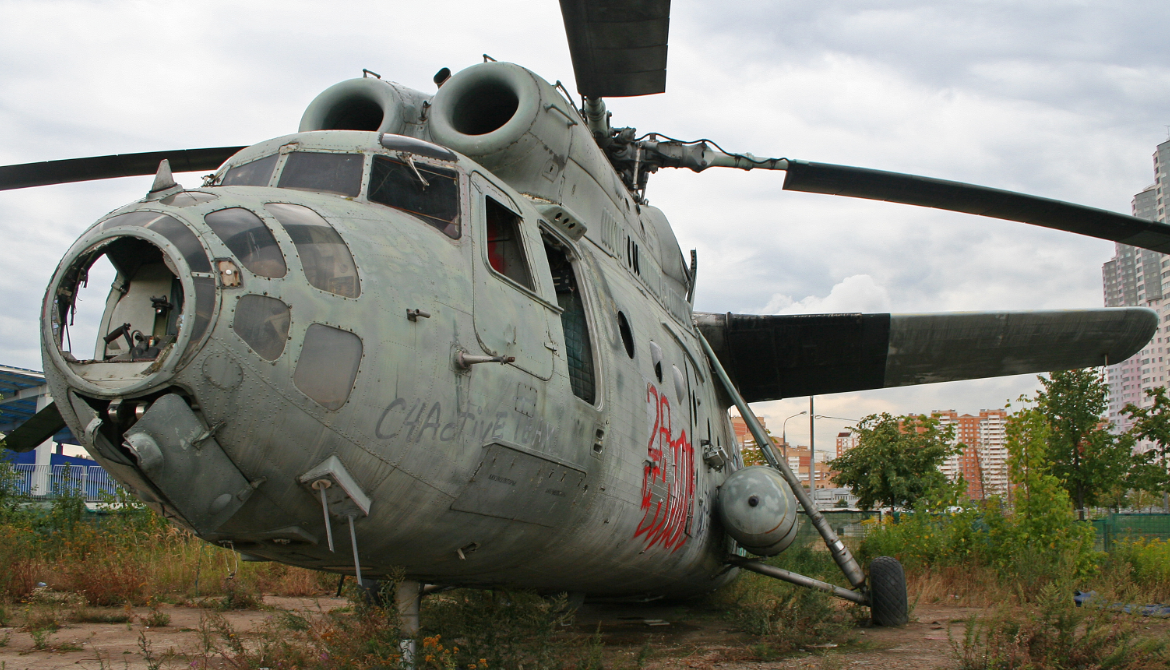
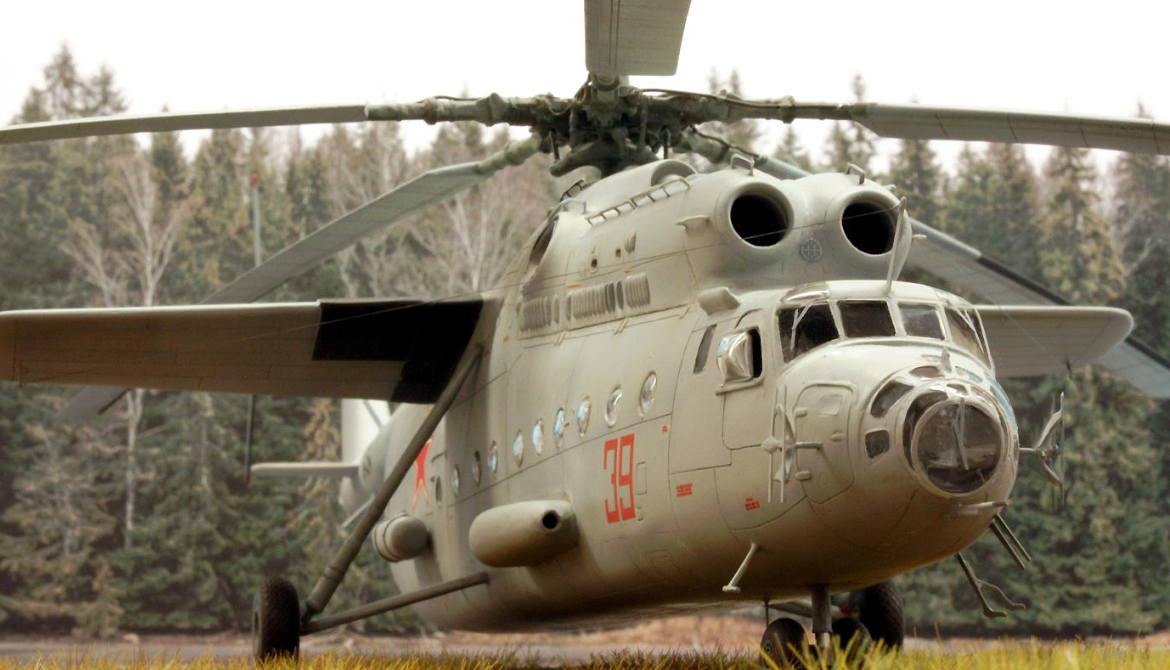
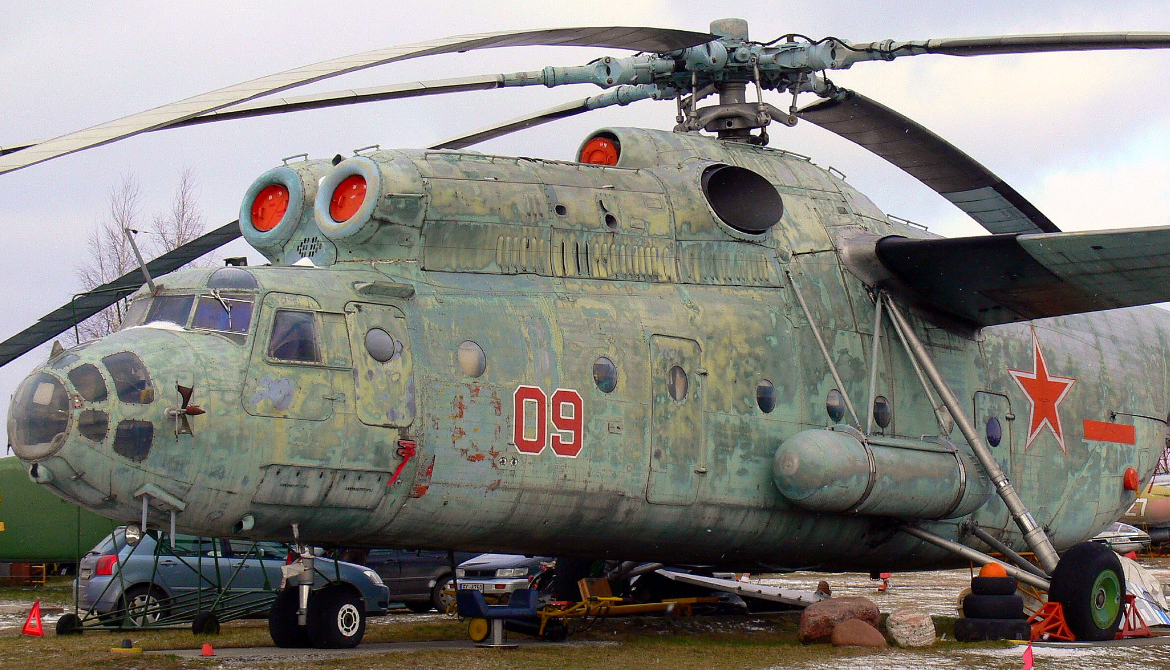
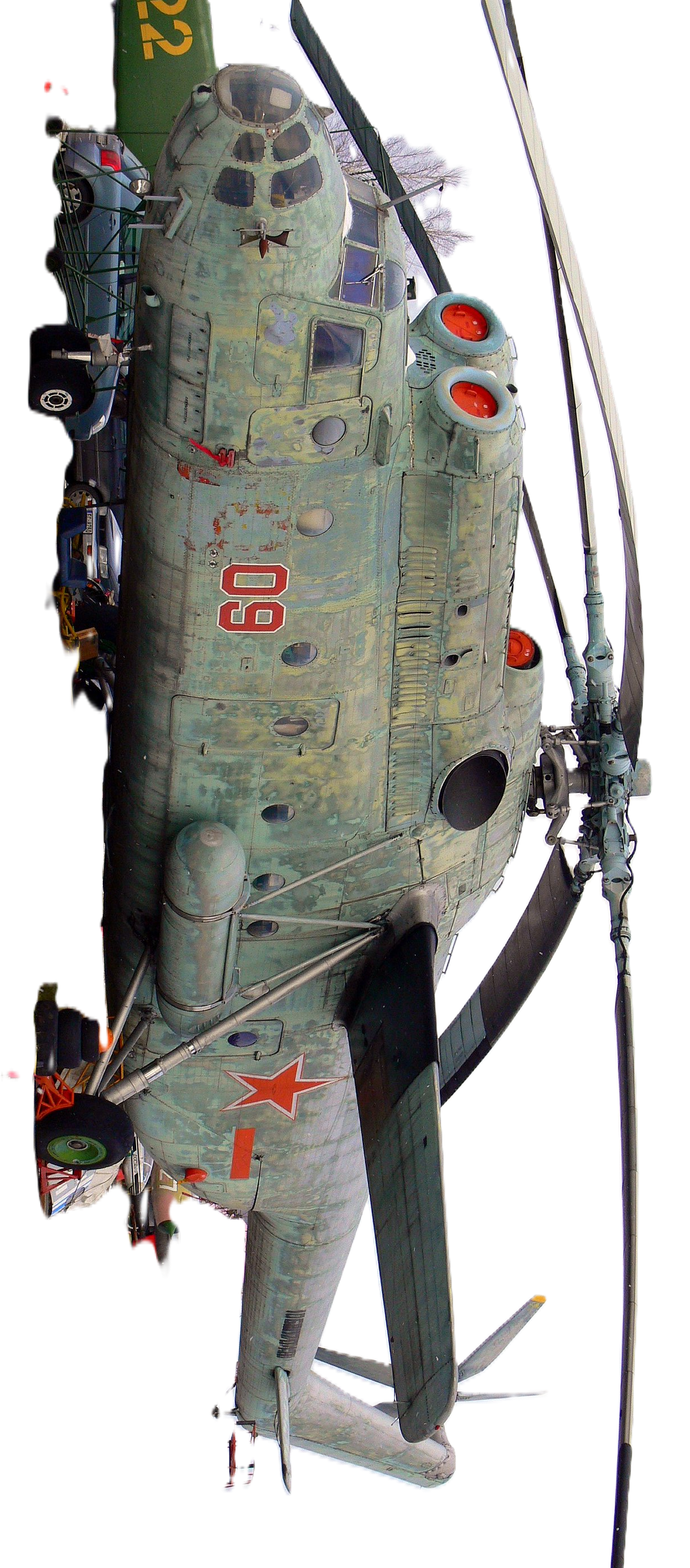
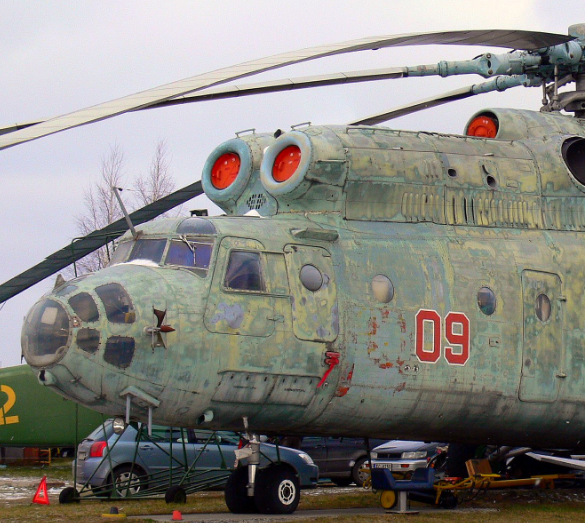
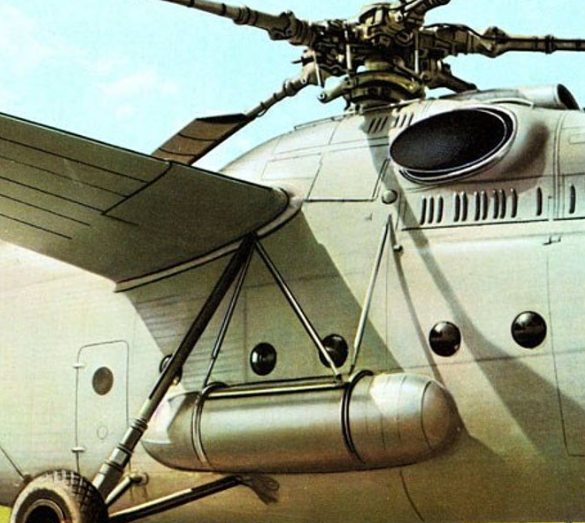

.png)
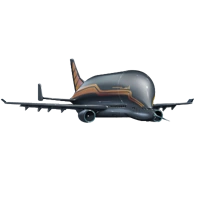
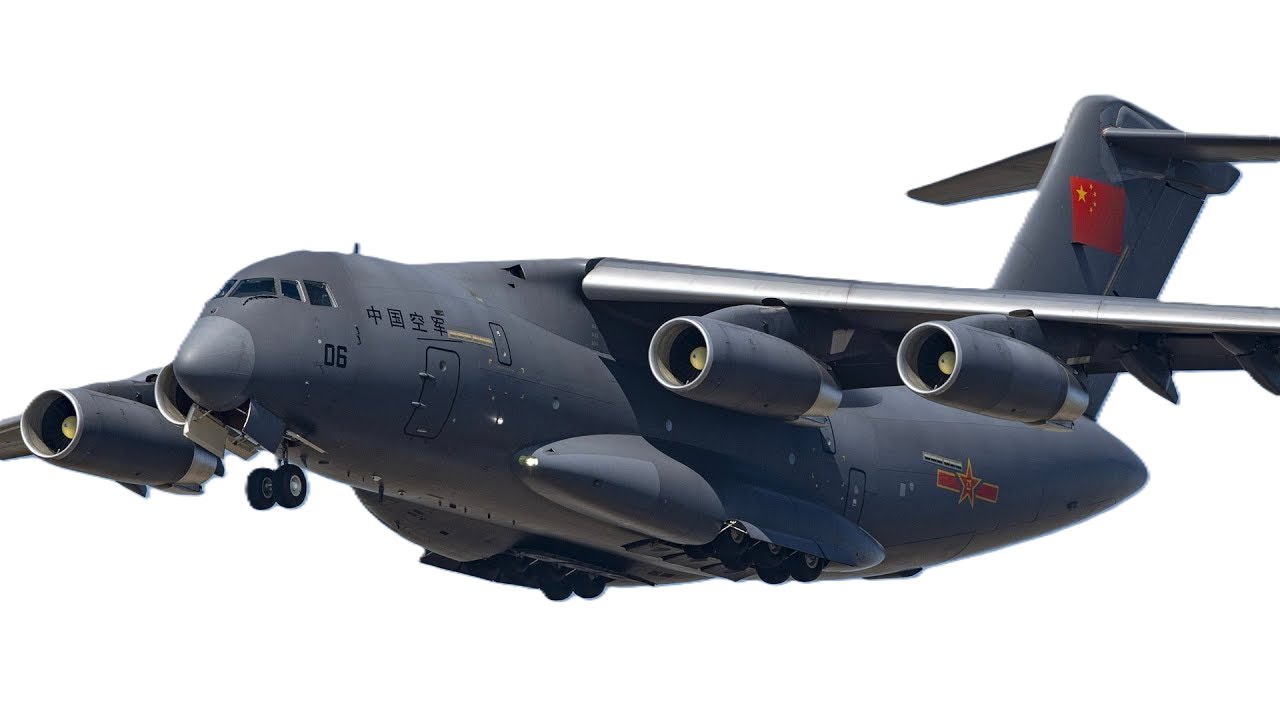
.png)